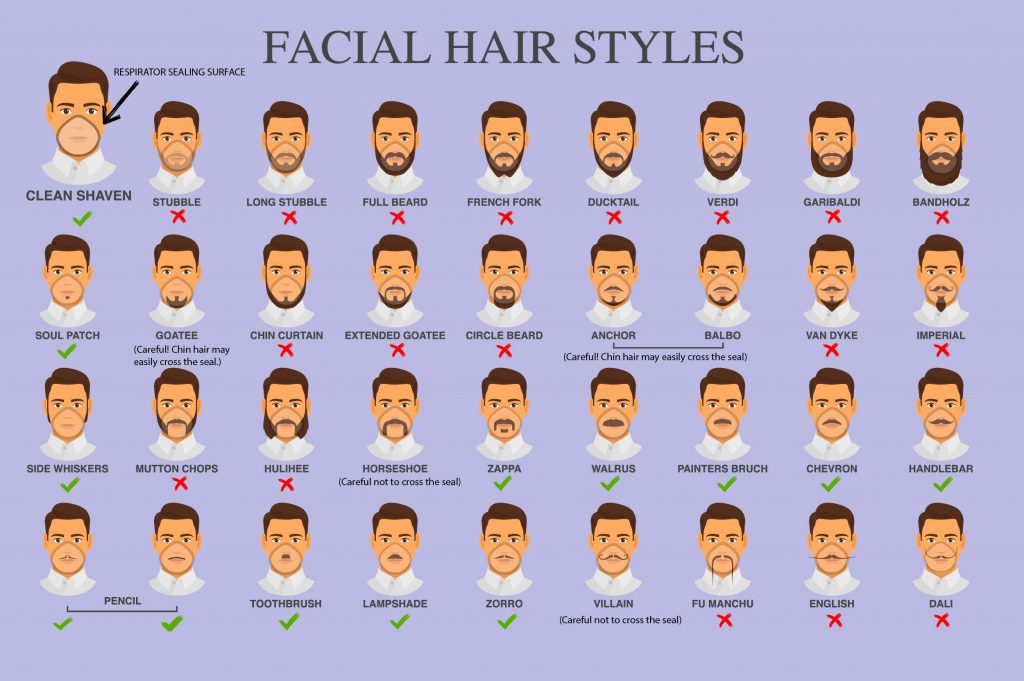Use these tips to prevent chin stubble and ’staches from putting your workers’ health at risk.
Whether you have a drywall hanger who started cultivating a bushy beard before ZZ Top made it into the Rock and Roll Hall of Fame or your welder is determined to push stubble style into 2018, things can get hairy fast when a respirator is needed.
Workers may bristle at the fact, but the experts have spoken: If your field crew’s job requires the use of a tight-fitting respirator, any hair that compromises the seal has got to go.
To work effectively, tight-fitting respirators require a secure seal around the face. And we mean tight; even a day or two of stubble can be enough for some guys to render the seal ineffective. Any gaps can let in contaminants headed straight for the lungs.
If you’re hearing the argument that a beard is useful filter for catching contaminants, it’s time to break out the science. Even if your worker’s soup strainer is keeping some allergens out of his nose and mouth, the truly dangerous particles are far too small to be caught in this trap.
Not all facial hair is out of bounds, however. Workers can still rock some styles: Short mustaches, sideburns and small goatees, when neatly trimmed, may fit OSHA’s requirements for tight-fitting respirator use. For workers whose facial locks leak beyond the seal, there is another option that can keep them looking, and feeling, good: a loose-fitting respirator.

Pros and cons of loose-fitting respirators
Loose-fitting respirators provide the same protection as tight-fitting respirators but cover the whole head, forming a seal under the chin or around the neck, which makes the issue of facial hair moot. While tight-fitting respirators are typically cheaper, investing in a loose-fitting respirator might cost less than, say, training a new clean-shaven concrete pourer. Loose-fitting powered air-purifying respirators, aka PAPRs, also don’t need annual fit tests, an additional cost saving.
There are downsides to this battery-powered option, however. Loose-fitting PAPRs can be bulky and noisy in addition to being more expensive. Contractors with workers determined to keep their facial hair should weigh the disadvantages and advantages before deciding whether to offer them as an alternative.
Whether or not you decide to institute an “ask and receive a PAPR” policy, be clear with your respirator-using employees about what facial hair is allowable.
Setting clear policies for facial hair
OSHA requires all employers who mandate respirator use to put their policies in writing. This is a smart practice because it ensures everyone is held to the same standard of protection. But an across-the-board beard ban can create its own problems.
When setting your policies, you might want to:
- Address employee concerns. The policy is there to protect everyone, but it pays to listen to your workers and discuss the rules with them. Worker buy-in is critical to your PPE policy’s success, since it helps ensure the equipment will be used appropriately. If there’s an overwhelming issue with tight-fitting respirators, it may be time to calculate the ROI of a loose-fitting alternative.
- Provide shaving reminders. Don’t make the annual fit test be the only time you discuss the need to keep clean-shaven around the respirator seal. Consider adding a calendar reminder in October to bring up facial hair in your next staff meeting, toolbox talk or company newsletter before Movember sets in.
- Set penalties for policy breakers. Ultimately, your workplace must put safety before style. If a worker shows up sporting growth that breaks the rules, reinforce the policy, whatever it might be. Consider inserting contractual conditions that treat failure to follow it as gross misconduct, with set penalties up to and including dismissal. Make it clear that you’re open to reevaluating requirements as requested by staff, but not to looking the other way when it comes safety.
Illustration credit: NIOSH Science Blog/Jaclyn Krah Cichowicz, Ron Shaffer, and Markee Shamblin

